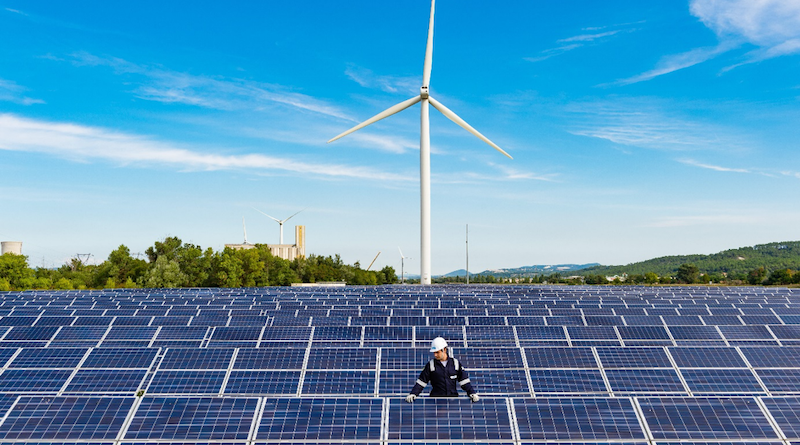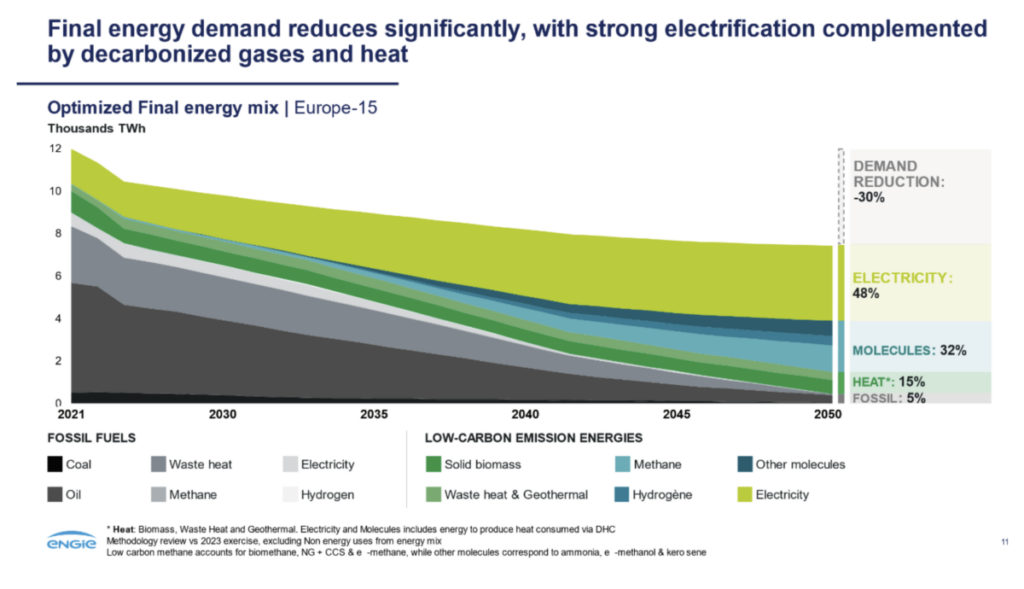
Europe’s pathway to decarbonization and industrial competitiveness
Over the past decades, Europe has been a global leader in the energy transition, demonstrating commitment and ambition in decarbonizing its economy. Today our continent stands at a crossroads with an unprecedented challenge: maintaining its green leadership while reinforcing its industrial competitiveness and sovereignty. In a shifting geopolitical landscape, Europe must reaffirm its decarbonization ambition and ensure that the energy transition remains a competitive advantage.
The energy transition: a competitive imperative, key for our sovereignty
The energy transition is not just an environmental necessity, it is also an economic opportunity. Other regions of the world such as China, where 50% of new renewable capacity was installed in 2024, are seizing this opportunity. Opposing sustainability and competitiveness is a short-term perception while decarbonization strengthens economic resilience, improves security of supply, and fosters technological innovation and the creation of new jobs. The Clean Industrial Deal is a crucial step in this direction and ensures that Europe remains at the forefront of green industrial leadership.
The energy transition also helps us to reduce dependency on imported supply. It allows us to reshore energy production with homegrown molecules such as biomethane, and homegrown electrons with renewables which, when installed, do not require any important feedstock supply.
2050 net-zero target: the challenge that lies ahead
However, our recent “ENGIE Decarbonization Pathways for Europe 2050” indicate that while the 2030 Fit for 55 targets are within reach—thanks to the rapid deployment of mature technologies such as solar and wind—the real challenge that lies ahead is the 2050 net-zero goal. Currently, 70% of required technologies are still not fully industrialized. We need to boost innovation and scale up new technologies.

Key levers, electrons and molecules
The overwhelming challenge for companies and governments is to conduct this transition in the most affordable manner. All levers should be activated starting with electrification. We must ensure that every electron is “smart”, namely decarbonized, efficiently distributed, at the right time, and at the lowest possible cost. This is notably enabled by coupling renewables and batteries: ENGIE is playing its part, targeting 95 GW of installed renewables and battery storage capacities by 2030 worldwide.
Other technologies have a role to play such as nuclear power in certain European countries. Lastly, with electrification comes the need to develop and reinforce power grids.
Electrification is the first lever of the energy transition, but it will only address approximately 50% of Europe’s total energy demand. We must also activate green gases (such as biomethane, hydrogen and its derivatives, e-molecules etc.) to meet certain specific needs. This is the case for industrial feasibility reasons, especially in the hard-to-abate sectors, i.e. heavy industries or transportation, but also to optimize the global energy system and avoid overdeveloping certain electrical capacities at a higher cost. This is what we refer to at ENGIE, as the alliance of electrons and molecules.
For example, biomethane could supply 20% of France’s gas consumption by 2030, (which is the equivalent of Russia imports before 2022) enhancing Europe’s energy sovereignty. As for hydrogen, though still emerging, it must be pursued as a key flexibility enabler.
Overall, we know how to decarbonize molecules, and we can draw on our experience in other technologies that are now mature. Twenty years ago, no one would have imagined that half of the EU’s electricity (48%) would come from renewables in 2024!
In parallel, to make the transition cost effective and to provide long-term certainty, a gradually increasing carbon price floor would offer stability, incentivizing decarbonization while generating revenues for climate investments.
Of course, the energy transition requires very substantial investments, but these are within the reach of our economy, at around 2% of GDP per year. They will gradually be offset by savings on fossil fuels. The cost of inaction, on the other hand, is much greater: 10% of GDP for each additional degree, not to mention the ensuing environmental and human drama.
Without these industrial development efforts towards clean energy, I am convinced that we will lose both the climate and competitiveness battle, while weakening our sovereignty.
To successfully overcome this challenge, I see three priorities:
- First priority, optimizing the energy system on a European scale
We need to capitalize on the complementarities of our national energy mixes and natural resources (wind in the north, solar the south, hydro, nuclear, green gases in other regions, etc.), without any technological dogma. We must promote cross-border mechanisms such as Power Purchase Agreements, and Capacity Remuneration, that enable long-term investment. These are part of the European energy framework, but we need to make them even easier to implement, learning from the most mature countries, and at the same time push for the development of infrastructures, notably interconnections, to maximize efficiency and resilience.
- Second priority, the energy transition cannot be achieved at the expense of the industry and consumers
For the cost of this transition to be bearable by industry actors, public authorities need to accompany and support them in their demand for affordable and reliable decarbonized energy. This includes standards and incentives for sectors such as chemicals and aviation, which need sustainable aviation fuels and green hydrogen. If we set standards without the associated financial support, we will not succeed.
By doing so, Europe will enable manufacturers to make a long-term commitment to offtake decarbonized energy, a commitment that will bring energy players visibility they need to accelerate their own investments.
- Third, the final challenge is to demonstrate both ambition and pragmatism at European and national level
We need to reaffirm our targets and provide stability to enable investments, but remain pragmatic when it comes to implementation. For example, for sectors that are not off the ground yet, such as hydrogen: we may need to adjust regulations – the challenge is to get the decarbonization process off the ground rather than limiting development based on color classifications. Another example is to accelerate the permitting processes to ensure a faster deployment of renewables.
All that goes along with the simplification agenda that is currently discussed in Europe, which I welcome.
Europe’s responsibility and ENGIE’s commitment
Despite the context of green backlash, European citizens overwhelmingly support the energy transition.
The survey we conducted in ten European countries paints the picture of a Europe ready to act: 89% of those questioned want the energy transition to move ahead, while only 6% consider back tracking.
This broad consensus underscores our collective responsibility to act decisively. And that is where we have a key role to play. In the eyes of Europe’s citizens, after governments, it is the major industrial groups specializing in energy that are the most legitimate players in driving the energy transition forward. ENGIE is up to the task.
Thanks to our integrated business model, we address every aspect of the transition—from energy generation to demand management and infrastructure development. Each year, we invest more than €10 billion to accelerate the energy transition.
The coming years will be decisive. Europe must stay the course and maximize its efforts to build a competitive, resilient, and decarbonized economy. Achieving the energy transition requires unwavering political support at all levels. Governments must act swiftly, in concert with the private sector, to create a framework that supports this transition and that includes all stakeholders. The energy transition is not just a necessity; it is an opportunity for industrial renewal, economic growth, and strategic sovereignty. Now more than ever, let’s stay the course!




